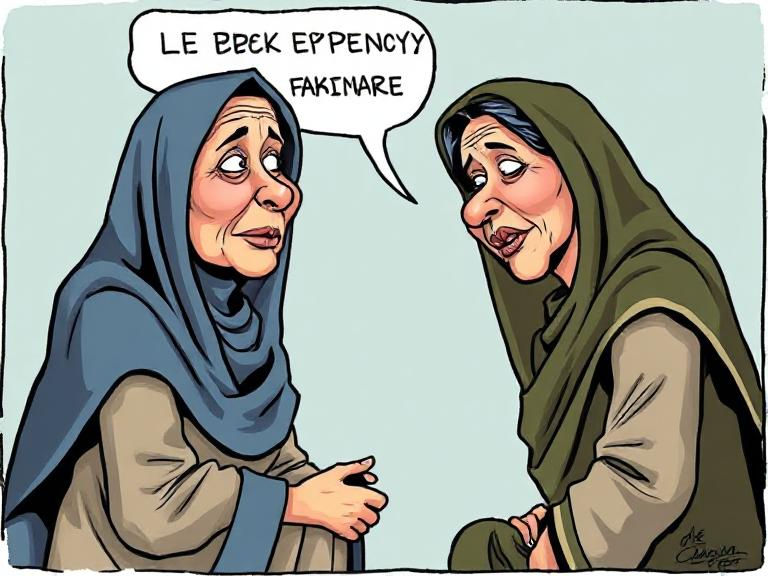Life Expectancy for Females in Pakistan
Latest details on female life expectancy figures in Pakistan, current statistics, the major determinants affecting women’s health, past trends, and factors that can influence longevity for women in that country are discussed.
Have you ever thought of the life expectancy of women in Pakistan? Life expectancy is a critical measure of wellness, lifestyle, and the development status of the country. Since women constitute a significant portion of Pakistan’s populace, the average life expectancy gives insights into the quality of healthcare, education, and social conditions for women in this country. Pakistan has progressed over the last few decades, though so many challenges ask for solutions still need to be effectively addressed. Let us look into the close-up details!
What Life Expectancy Means
Life expectancy is the average number of years a human is expected to live in accordance with current mortality rates. With respect to female life expectancy, variables such as healthcare, social conditions, nutrition, education, and others exert their influence on its measure.
A High-Level Review of Female Life Expectancy in Pakistan
The life expectancy of females in Pakistan has been rising gradually over the last few decades, but at the same time, it has still fallen far behind that of almost all other countries. Women suffer from the peculiar health problems, gender brassiness, and social constraints that impede them from realizing their true-life expectancy.
Historical Contours of Female Life Expectancy in Pakistan
Life Expectancy in the Early 2000s
The life expectancy among females was, in the year 2000, generally 65 years in Pakistan. This was quite low as compared to global standards. Some of the determinants of this unevenness are an inefficient healthcare system, high maternal mortality rates, and poverty.
Progress Over The Years
Fast forward to the present, and female life expectancy in Pakistan averages 70 years. While this Life expectancy among females in Pakistan in an approximate fashion was found to have risen above the 70-year level. Such improvement could be attributed, among other factors, to better healthcare delivery, immunization programs, and growing women’s health awareness levels. Nevertheless, this is behind that of female life expectancy observed by the world at close to 75 years.

Factors Influencing Female Life Expectancy in Pakistan
Healthcare System
Awareness of access to healthcare is one among several challenges Pakistan faces. Women in rural sectors are deprived of adequate medical attention, complications during birth and other miscarriages are thus the consequences of this shortcoming.
Maternal Health
Worry about high maternal mortality has existed so long. A considerable number of women have died of some complication of pregnancy and childbirth. Unsafe delivery practices and inadequate prenatal care are just some of those practices.
Nutrition and Diet
Malnutrition, most notably among women and children, is rampant. It has manifested itself, most noticeably, in the shape of anemia and other nutrient deficiencies, all of which conspire against women’s health and longevity.
Socioeconomic Conditions
Poverty and unemployment force many into hard labor and contribute to rapid fatigue and deterioration of health.
Education Levels
The higher the education level, the better the health choices women are likely to make. Unfortunately, the literacy of women in Pakistan continues to lag behind male literacy levels.
Cultural and Gender Norms
Discrimination against women and curtailed freedom are such that women’s access to food, healthcare, and education is compromised.
Access to Clean Water and Sanitation
Lack of sanitation and unsafe drinking water have contributed to the spreading of diseases such as diarrhea and hepatitis that in turn had reduced life-expectancy rates.
Comparative Analysis with Others
South Asian Neighbors
India: Female life expectancy is about 73 years; Bangladesh, 74 years; Sir Lanka, 79 years.
International Comparisons
On an average scale throughout the world, women’s life expectancy is approximately 75 years. In developed countries, for example, Japanese women live to be as old as 87 years.
Maternal mortality is indeed one of the usual avoidable causes of death of women in the childbearing age in Pakistan. The maternal mortality ratio is about 186 deaths for each 100,000 live births and far in excess of the global standards.

The Role of Maternal Mortality Rate
Impact of Rural vs. Urban Living on Women Life Expectancy
Rural Women: Limited access to doctors, hospitals, and nutrition.
Urban Women: Face better access to hospitals, but urban-induced stress and pollution are health foes.
Common health problems of women in Pakistan include
Life Expectancy for Females in Pakistan
Cardiovascular Diseases
Among female Pakistanis, heart disease is a major cause of death.
Cancer
Breast and cervical cancers are common, but in this country of some 10 million females, diagnosis is seldom made early.
Diabetes
Growing rates among females are attributable to poor eating habits and lack of exercise.
Nutritional Deprivation and Anemia
These conditions are rather widespread, especially among pregnant females.
Government Initiatives to Improve Female Life Expectancy
Lady Health Workers (LHW) program.
Expanded Immunization Programs
Mother and Child Healthcare Centers.
National Nutrition Program.
Non-Governmental Initiatives and Their Contributions
Edi Foundation: emergency healthcare services.
Shaukat Khan um Memorial Cancer Hospital: cancer treatment and awareness.
Marie Stopes Society: family planning and maternal health

.
Education and Awareness
Educated women know how to make health choices. The various awareness campaigns on hygiene, nutrition, and maternal health can yield high dividends in life expectancy-related improvements.
Challenges towards Higher Life Expectancy for Females
Gender discrimination.
Limited health facilities in the far-flung areas.
Poverty and illiteracy.
Culture-myopic taboos regarding women’s health.
Future Outlook: Will Life Expectancy for Women Improve?
Yes, with all the efforts being made to improve healthcare, education, and social equality in the years ahead, there is every reason to expect improved life expectancy figures for women in Pakistan
Conclusion
Life expectancy among females in Pakistan has moved upward to some extent but continues to remain below world standards. Progress is still hindered by obstacles posed by the health sector, poverty, and gender inequity. However, with proper education, good medical facilities, and the empowerment of women falling in their respective places, the future is indeed very bright.
Questions and Answers
- What is the average female life expectancy in Pakistan?
Currently, an approximate average female life expectancy in Pakistan is calculated to be 70 years.
2. Why do females in Pakistan have a shorter life expectancy than females worldwide?
Poor health services, maternal mortality, rampant malnutrition, and gender bias.
3. Are life expectancy rates for females improving through the years?
Yes, life expectancy for females has improved from 65 years in the year 2000 to 70 years today.
4. The female diseases and causes of deaths are mainly-.
Cardiovascular diseases, maternal complications, cancers, and malnutrition.
5. What can be done to increase female life expectancy in Pakistan?
By providing better health care, education, nutrition, and gender equality.
The government must take other steps to support some of the countries by addressing education, health care, hygiene, and the enforcement of human rights.









